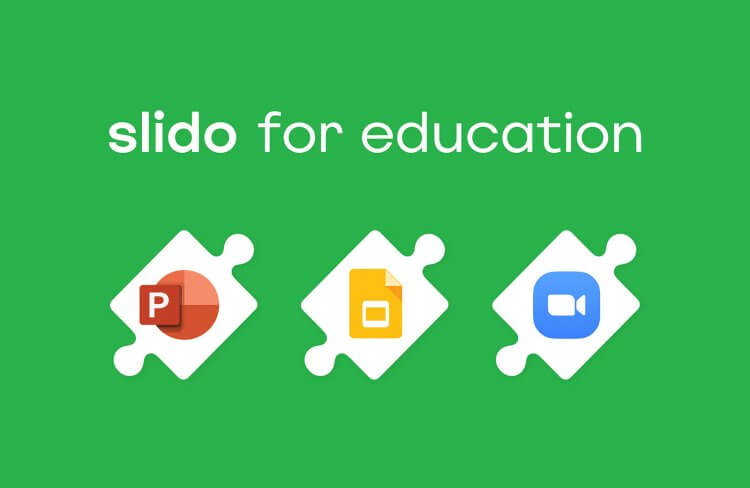It’s Friday 3 PM. You’re in your fourth meeting of the day and as another slide clicks by, you find yourself rewriting your grocery list. Sound familiar?
Now imagine you’re the one hosting the meeting.
To avoid running the kind of meeting you’d hate to attend, the INTENT model gives you a simple framework to not only win over your audience but also make sure your meeting leaves a lasting impact.
From Motion to Action
The truth is, many meetings lack the clear structure and purpose needed to make a real impact.
But what if you could turn every meeting from an obligation into an engaging, productive session that people actually enjoy?
The key lies in thoughtful design.
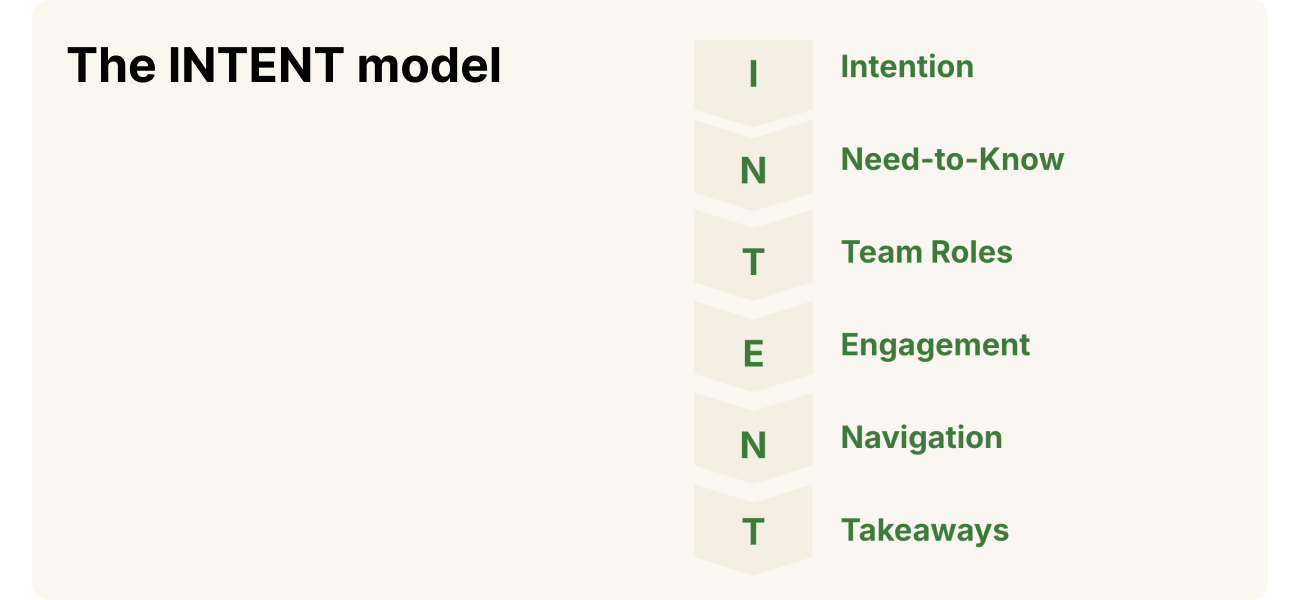
You can do it with the INTENT model, a powerful acronym that guides you through every stage of the meeting process, from the initial idea to the final follow-up.
In a recent webinar, we introduced the INTENT model as a step-by-step method to design and execute successful meetings.
Breaking Down the INTENT Meeting Design
This step-by-step guide moves beyond generic advice to offer a memorable and actionable structure that covers the entire lifecycle of a meeting, ensuring you turn your meeting goals and intentions into tangible and effective results.
Let’s break down each component.
I for Intention: Start with the ‘Why’
As we like to say, “Every meeting is won before it has started.”
This begins with defining your purpose. Before you even think about content or talking points, you must establish the “why” behind the meeting.
Different meetings have different needs, whether it’s for alignment, a team update, or a brainstorming session, but every single one must have a clear goal.
Ask yourself: Why am I having this meeting? What do I want attendees to know, feel, or do by the end?
For example, the goal of our webinar was to share best practices for running engaging meetings and show real-life examples.
Having a clear intention is the foundation of a successful meeting. Without it, you risk wasting everyone’s time.
N for Need-to-Know: Communicate with Clarity
Once you know your ‘why,’ the next step is to define the ‘what’ and the ‘who.’ This involves deciding what information is essential to share and, just as importantly, who actually needs to be there.
This is how you avoid the now iconic “that could have been an email” feedback.
A lack of clear structure is a primary reason people lose interest. To avoid this, communicate with clarity before the meeting:
- Pick the right audience and channel: Use email or a team platform to invite only those who need to attend.
- State the purpose and format upfront: Let people know why the meeting matters, how long it’ll take and what to expect.
- Outline any prep work: If attendees need to prepare, give them clear instructions beforehand.
T for Team Roles: Define Ownership
To ensure everything runs like clockwork, it’s crucial to define ownership and the roles of everyone involved. This is especially important for larger meetings or webinars.
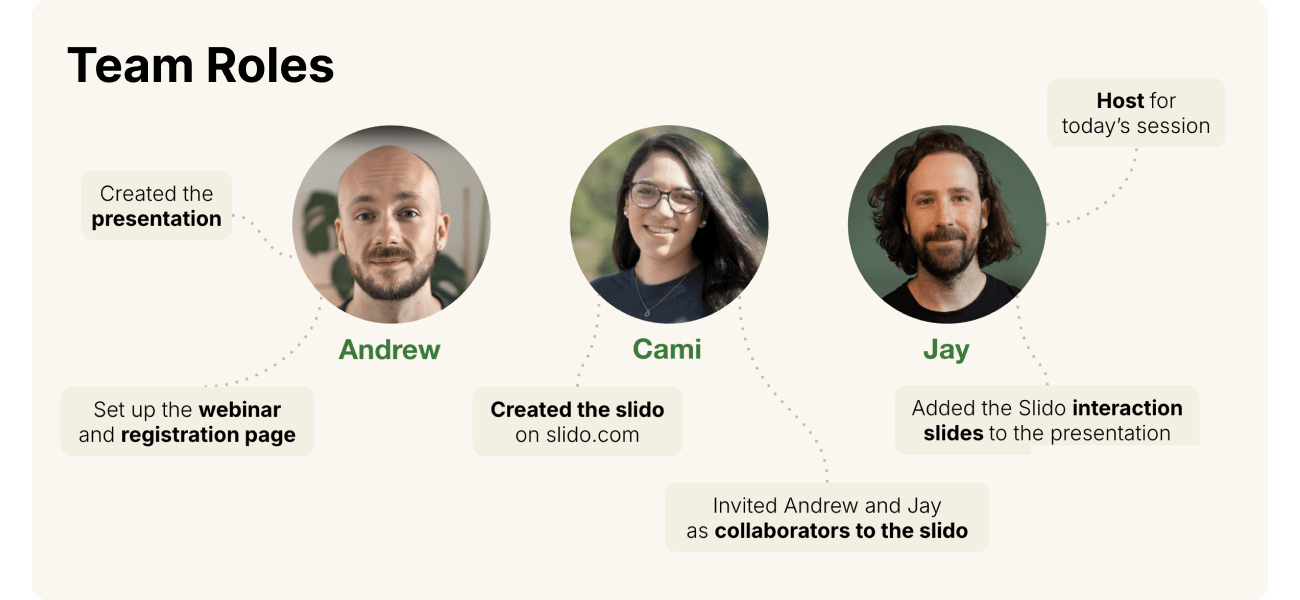
For instance, here’s how our presenters divided tasks for the webinar:
- Webinar Setup & Presentation Deck: Andrew, our content lead, was in charge.
- Interactive elements: Cami, our Customer Success Manager lead, set up the Slido polls and Q&A.
- The Host: Jay, our content and community manager, was responsible for setting expectations and ensuring everything ran smoothly by managing time, monitoring interactions, and troubleshooting, keeping the session focused and engaging for everyone.
While a weekly team meeting might only have a solo presenter, defining these roles in advance, no matter the scale, ensures all groundwork is covered.
E for Engagement: Design for Interaction
A great meeting doesn’t just happen; it’s designed. And keeping your audience engaged is key. We follow a simple rule: plan an interaction every 7 to 10 minutes. This could be:
- A quick poll
- Switching speakers
- A breakout session
- Playing a short video
The goal is to break up the monologue and long talks to keep the audience actively involved.
💡Useful Tip: Tools like Slido can be your best friend here, acting as a “second facilitator.” By incorporating features like real-time Q&A and polls, you can:
- Bridge the gap between the speaker and the audience.
- Use icebreaker polls to warm up the room.
- Check for understanding with quick pulse-checks.
- Allow participants to ask questions anonymously, fostering inclusivity.
N for Navigation: Facilitate with Confidence
With your plan in place, the focus shifts to how you facilitate during the meeting. This is where you bring your preparation to life with skilled navigation.
Key facilitation techniques include:
- Engaging early and often: Set the tone and encourage participants to share their thoughts throughout the meeting from the very beginning.
- Embrace pauses: It gives attendees time to think, reflect, and formulate their responses without feeling rushed. This is often hard, but it leads to better results and more intentional interaction.
- Practicing active listening: Don’t just launch a poll and move on. Comment on the results, highlight patterns and ask for clarification. If a poll reveals a lack of clarity on a topic, be prepared to pivot and spend more time on it.
- Managing the Q&A: Give people a minute or two to read through questions and upvote their favorites. This democratically decides which topics are most important to the audience, ensuring you address the most pressing issues first.
T for Takeaways: Summarize & Follow Up
The meeting doesn’t end when you click “Leave.”
The final, crucial step is to ensure the momentum continues through effective follow-up. This is how you create accountability and demonstrate that the meeting had a lasting impact.
Your post-meeting checklist should incorporate some or all these aspects:
- Make the meeting output visible: Share the presentation, recording and any other resources with all attendees, especially those who couldn’t make it.
- Outline the next steps: Clearly define action items, assign ownership and set deadlines.
- Address unanswered questions: Don’t let good questions disappear. Follow up by answering them in a shared document, a short video or even a dedicated “Ask Me Anything” (AMA) session.
- Gather feedback: Use a simple survey to ask what worked and what could be improved. Then, act on those insights to make your next meeting even better.
Conclusion: Win Every Meeting Before It Starts
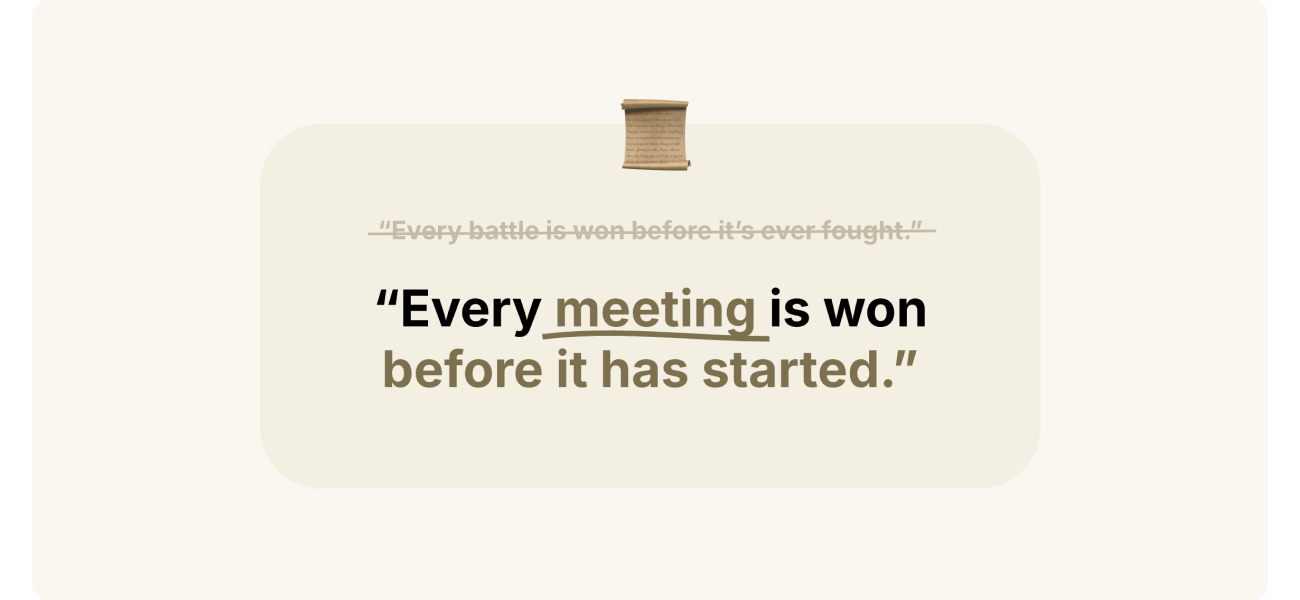
The bottom line is simple: Successful meetings don’t just happen—they’re planned.
By shifting from a reactive approach to a proactive framework like the INTENT model, you can ensure every meeting has a clear purpose, a thoughtful structure and a direct path to making a real impact.
Ready to experience the INTENT design in action?
Watch the full webinar to get a hands-on look at how to design and facilitate meetings that truly matter.
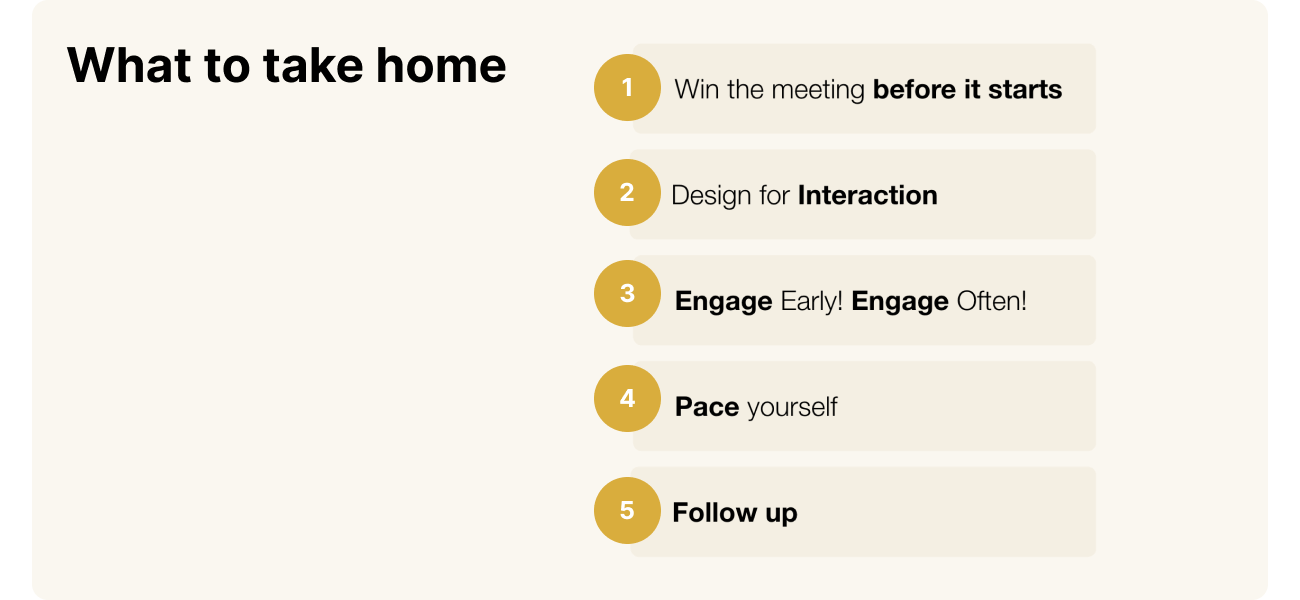
Or just try Slido today to make your next meeting interactive and impactful.
We want to hear from you!
How do you make sure your meetings have an impact? Do you use an approach similar to the INTENT model?
We want to hear your thoughts, ideas and best practices in our Intent to Impact Community Discussion.




